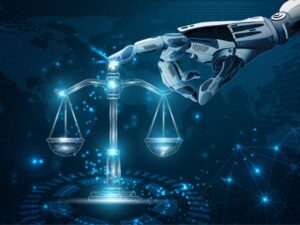AI Adoption 101: How to Treat AI Like a New Colleague on Your Legal Team
By Bärí A. Williams
October 22, 2025

Bärí A. Williams leads LegalOn’s legal and legal content teams. An attorney with 16+ years in tech transactions, she blends legal expertise with industry insight. Previously, she held pivotal roles at Meta (Facebook) and StubHub, shaping innovative legal strategies. Her email is: bari.williams@legalontech.com.
Published in Today’s General Counsel, November/December 2025
For years, AI in legal felt more hype than help. Promises of “100% accuracy” fell apart when AI hallucinations made headlines in court filings. But things are changing. The technology is maturing. Speaking from experience, in-house legal departments are under growing pressure to execute strategic AI adoption—especially for tools that take on the tedious, repetitive tasks that slow business down.
When I think about adding AI to my department, I treat it like hiring a new team member. What role should it play? How will it fit into our workflows? What guidance does it need to build trust over time? The key is knowing what AI does well, where human oversight is essential, and which decisions must stay with legal experts.
Here’s a four-stage roadmap to help lead your legal team through four stages of AI adoption:
Stage 1: Writing AI’s first job description
If AI joined your team tomorrow, what’s the first task you’d give it? I’d start with high-volume, rules-based work—the kind that’s safe to automate but still matters if it’s done wrong.
Examples include:
- First-pass contract review: Let AI review and redline non-disclosure agreements (NDAs), master service agreements (MSAs), and other standard agreements in minutes, not hours, so your team can focus on strategic matters.
- Risk flagging: Have AI flag non-compliant terms or deviations from your playbook, then rank issues by severity so you know what needs attention first.
- Deadline reminders: Use AI to track renewals, filings, and compliance dates so nothing slips through the cracks.
In-house legal teams often have backlogs of low-risk vendor agreements that slow down procurement. By deploying legal AI to handle the first-pass review, they can cut the turnaround time from days to hours, freeing up the lawyers to focus on high-risk negotiations and advising the business on compliance for a major product launch.
Stage 2: Onboarding AI into the team
Like any new hire, AI needs onboarding. That means introducing its role, setting expectations, and giving it the context to operate effectively. Key team members should “train” the AI on workflows and connect it to intake, review, approval, and close-out processes so its outputs land where the team already works.
Remember, the goal is integration, not isolation. AI can centralize case data, automate updates, and coordinate assignments—becoming the connective tissue between legal, sales, procurement, and finance. Transparency is critical. If AI flags a risky clause, explain why; if it automates a step, show the logic. That builds trust and enables refinement.
For example, if AI is integrated into an intake portal, then contracts uploaded by sales or procurement can receive an instant AI review and produce annotated documents for the legal team. This eliminated endless email back-and-forth and gives business teams near-real-time contract visibility.
Stage 3: Managing performance and risk
AI can move fast, but speed without standards is a liability. Treat AI like a junior colleague who still needs oversight. Set benchmarks for accuracy, compliance, and confidentiality. Use monitoring dashboards, audits, and feedback loops to track performance and improve results.
Not every legal task belongs to AI, and defining boundaries is critical. High-value deals and sensitive matters should remain human-led.
When legal ops runs monthly audits, compare the AI-reviewed contracts with the human-reviewed ones. Log discrepancies, refine rules, and route the more complex matters to the lawyers. This approach results in better overall performance and provides reassurance that automation doesn’t automatically introduce hidden risks.
Stage 4: Delegating in the era of AI colleagues
Once trust is built, boundaries are set, and rules are in place, AI can graduate from handling isolated tasks to managing entire workflows within set parameters. For example, AI could manage the vendor contract renewal process, process standard NDAs without human review, or prepare quarterly compliance summaries for the executive team.
This is where legal leaders shift from hands-on oversight to managing a hybrid team of humans and AI. It also means preparing the organization with a readiness checklist:
- Are there clear policies for AI use and accountability?
- Did you define metrics that measure both productivity and compliance?
- Does this contribute to a culture that values technology while keeping human judgment at the core?
At this stage, you’re now ready to pilot the AI. One practical place to start is an AI workflow that manages contract renewals under $50,000 and escalates to humans only when counterparties request non-standard terms. This would free senior counsel to focus entirely on strategic deals and litigation matters.
Moving business forward with legal AI
AI won’t replace lawyers. The complexity and nuance of legal work demand human judgment. Rather, legal AI is about reshaping how legal work gets done.
When you start with the right tasks, integrate AI into your workflows, set clear standards and boundaries, and delegate with intention, you create a hybrid team that moves faster and works smarter. The result? A legal team that’s empowered to think, decide, and lead so they can move their businesses forward.
The question isn’t whether AI will join your legal team. The question is whether you’ll be ready to lead it.
Must read intelligence for general counsel
Subscribe to the Daily Updates newsletter to be at the forefront of best practices and the latest legal news.
Daily Updates
Sign up for our free daily newsletter for the latest news and business legal developments.




